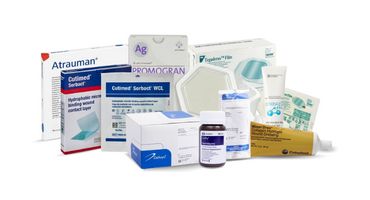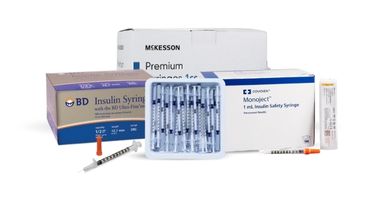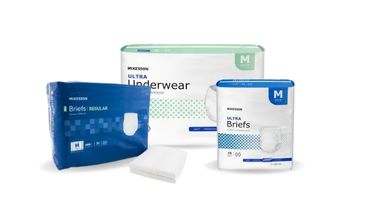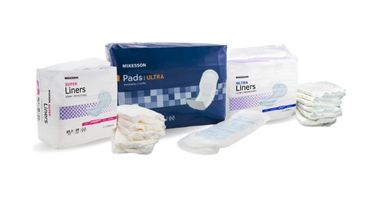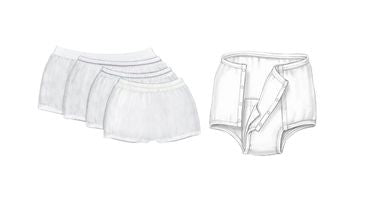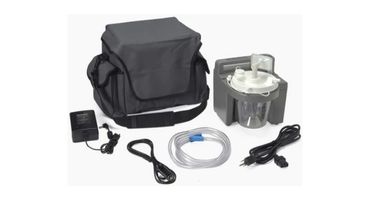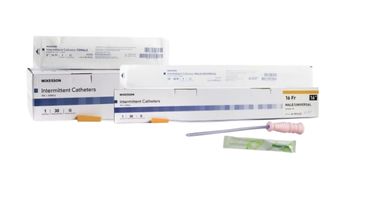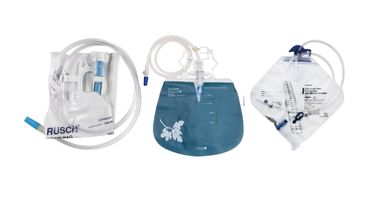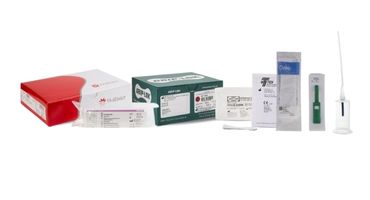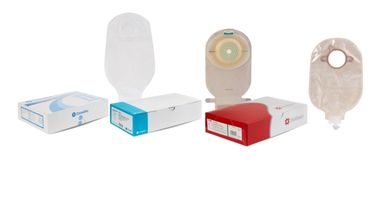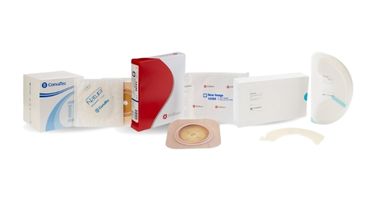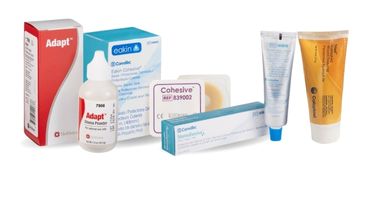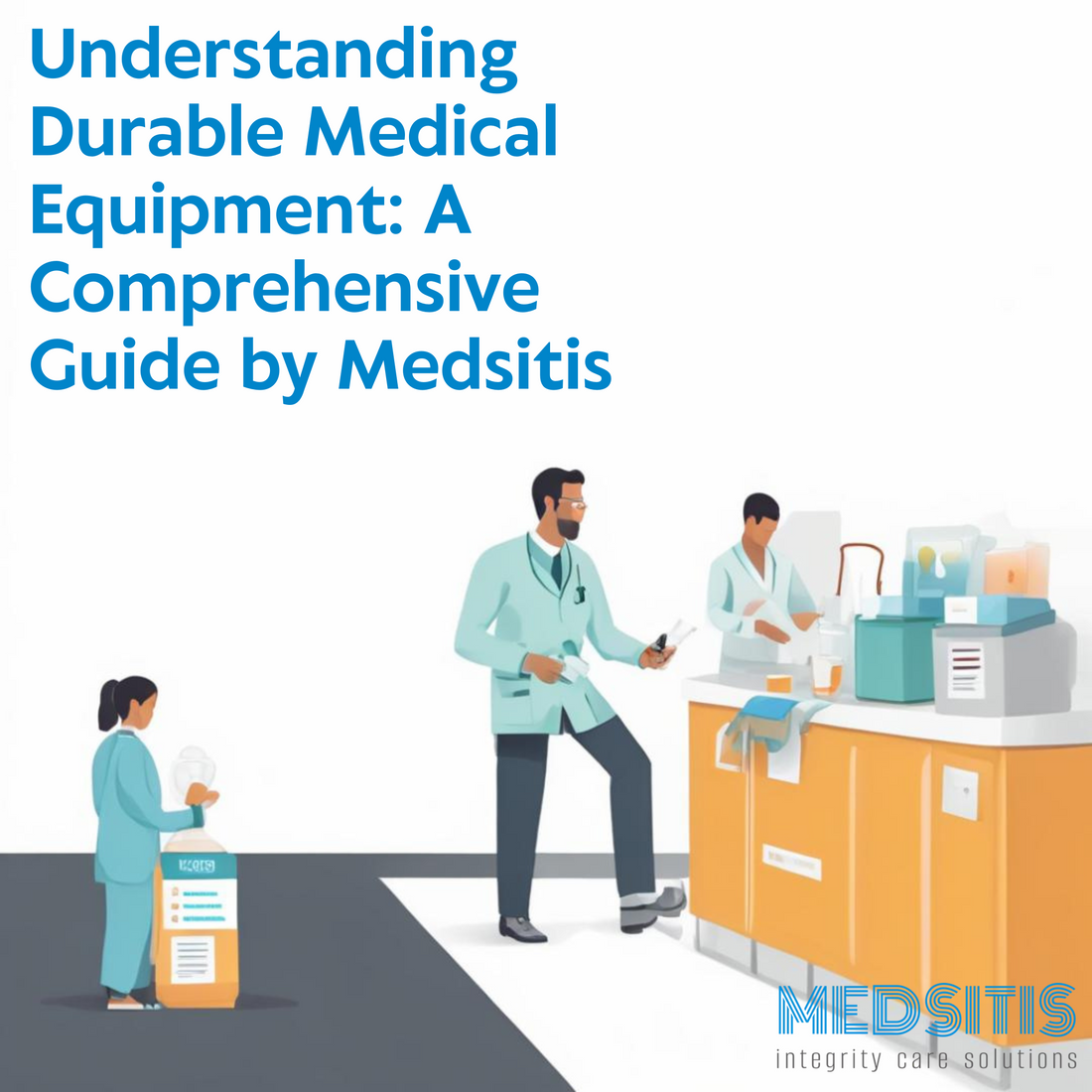In the ever-evolving landscape of healthcare, understanding Durable Medical Equipment (DME) is crucial for patients and providers alike. As a cornerstone of home healthcare, DME medical supplies empower individuals to manage their health conditions effectively outside of traditional settings. From enhancing mobility with walkers and wheelchairs to ensuring respiratory support with CPAP machines, these essential tools play a pivotal role in improving quality of life. With Medsitis as your trusted partner, navigating the complexities of DME insurance coverage and procurement becomes a seamless experience. This comprehensive guide will delve into the intricacies of DME, shedding light on its benefits and providing valuable insights on how to access these indispensable resources through insurance and beyond. For more information on specific medical supplies, check out our Layman's Guide to Syringes and Needles.
What Qualifies as Durable Medical Equipment
Durable Medical Equipment (DME) plays a crucial role in patient care and rehabilitation. This section explores the common examples of DME and the essential features that define these medical devices.
Common Examples of DME
Durable Medical Equipment encompasses a wide range of devices designed to support patients in their daily lives and medical treatments. These items are built to withstand repeated use and serve specific medical purposes.
Some of the most frequently encountered DME items include wheelchairs, hospital beds, and oxygen equipment. These devices directly improve mobility, comfort, and respiratory function for patients with various conditions.
Other common examples are walkers, crutches, and canes, which assist with mobility and balance. For patients managing chronic conditions, devices like blood glucose monitors, CPAP machines, and infusion pumps are essential DME items.
Lastly, items such as commode chairs, shower chairs, and transfer benches fall under the DME category, enhancing safety and independence for individuals with limited mobility.

Essential Features of DME
To qualify as Durable Medical Equipment, devices must meet specific criteria that set them apart from other medical supplies. These features ensure the equipment's reliability and effectiveness in long-term patient care.
Durability is the primary characteristic of DME. These items are designed to withstand repeated use over an extended period, typically lasting three years or more. This longevity makes them cost-effective for both patients and healthcare systems.
Medical necessity is another crucial aspect of DME. Each item must serve a specific medical purpose, prescribed by a healthcare professional to address a particular condition or disability. This ensures that the equipment directly contributes to patient treatment or quality of life.
DME items are primarily intended for home use, allowing patients to manage their conditions outside of clinical settings. This feature promotes independence and reduces the need for frequent hospital visits or long-term care facility admissions.
DME vs. Non-DME: Key Differences
Understanding the distinction between DME and non-DME items is essential for patients, caregivers, and healthcare providers. This section clarifies the DME definition and compares DME with non-DME medical supplies.
Understanding the DME Definition
Durable Medical Equipment (DME) refers to specific medical devices that meet strict criteria set by healthcare regulations and insurance providers. These criteria help distinguish DME from other medical supplies and equipment.
The primary defining features of DME include its durability, medical necessity, and suitability for repeated home use. DME items are designed to last for an extended period, typically three years or more, under normal use.
Another crucial aspect of DME is that it must be prescribed by a healthcare professional to address a specific medical condition or disability. This medical necessity ensures that the equipment is an integral part of the patient's treatment plan.
Lastly, DME is intended primarily for use in the home environment, enabling patients to manage their conditions independently and reducing the need for frequent hospital visits or long-term care admissions.
Comparing DME and Non-DME Items
While DME serves specific long-term medical needs, non-DME items are typically consumable or disposable medical supplies. Understanding these differences is crucial for proper healthcare management and insurance coverage.
|
Characteristic |
DME |
Non-DME |
|---|---|---|
|
Durability |
Lasts 3+ years |
Often single-use or short-term |
|
Prescription |
Required |
May not be required |
|
Primary Use |
Home-based |
Varied (clinical or home) |
|
Examples |
Wheelchairs, oxygen equipment |
Bandages, syringes |
|
Insurance Coverage |
Often covered |
May have limited coverage |
Non-DME items, such as disposable gloves, wound dressings, or incontinence supplies, are essential for day-to-day care but do not meet the criteria for durable medical equipment. These items are typically replaced frequently and may not require a prescription.
It's important to note that while both DME and non-DME items are crucial for patient care, their classification affects insurance coverage and reimbursement policies. Patients and caregivers should be aware of these distinctions when planning for healthcare expenses.
How to Obtain DME Through Insurance
Acquiring Durable Medical Equipment through insurance can significantly reduce out-of-pocket expenses for patients. This section guides you through the process of obtaining DME coverage and explores various payment options.
Navigating Prescription and Coverage
Obtaining DME through insurance involves several steps, from getting a prescription to securing coverage approval. Understanding this process can help patients and caregivers navigate the system more effectively.
-
Obtain a prescription: The first step is to get a written order or prescription from a qualified healthcare provider. This document should detail the medical necessity of the equipment and how it relates to your condition.
-
Verify insurance coverage: Contact your insurance provider to confirm coverage for the prescribed DME. Ask about any specific requirements or limitations on coverage, such as preferred suppliers or rental vs. purchase options.
-
Choose a supplier: Select a DME supplier that is in-network with your insurance provider. This ensures maximum coverage and minimizes out-of-pocket expenses.
-
Submit documentation: Work with your healthcare provider and DME supplier to submit all necessary documentation to your insurance company. This may include the prescription, medical records, and any required prior authorization forms.
-
Follow up: Stay in communication with your insurance provider and DME supplier to track the progress of your claim and address any issues that may arise during the approval process.
Exploring Payment Options for DME
While insurance coverage can significantly reduce the cost of DME, patients may still face out-of-pocket expenses. Understanding various payment options can help make necessary equipment more accessible.
Insurance co-payments are often the first line of payment for DME. The amount varies depending on your insurance plan and the specific equipment. It's important to budget for these costs and understand your plan's annual out-of-pocket maximum.
Flexible Spending Accounts (FSAs) and Health Savings Accounts (HSAs) can be valuable resources for covering DME expenses. These tax-advantaged accounts allow you to set aside pre-tax dollars for medical expenses, including DME purchases and co-payments.
For those facing high costs even with insurance, many DME suppliers offer financing options or payment plans. These arrangements can help spread the cost over time, making expensive equipment more manageable.
Lastly, various charitable organizations and foundations provide financial assistance for DME. Research condition-specific organizations or local charities that may offer grants or subsidies for medical equipment.
Conclusion
In conclusion, navigating the world of Durable Medical Equipment (DME) is a vital aspect of modern healthcare, enabling patients to live safely and independently. From understanding what qualifies as DME to successfully securing insurance coverage, this guide has aimed to demystify the process for patients and caregivers alike.
With the expert guidance of Medsitis, patients can confidently overcome the complexities associated with DME procurement and insurance, ensuring they have access to essential tools that enhance their quality of life. Medsitis’ commitment to comprehensive support and resources makes them a trusted partner in the healthcare journey, dedicated to empowering individuals with the knowledge and equipment necessary for optimal health management.

